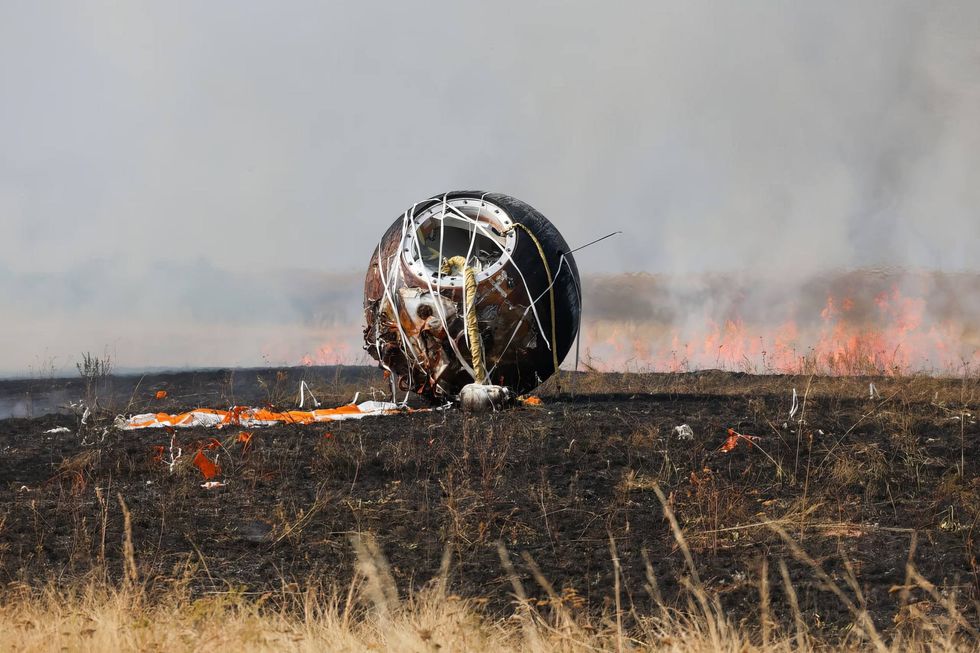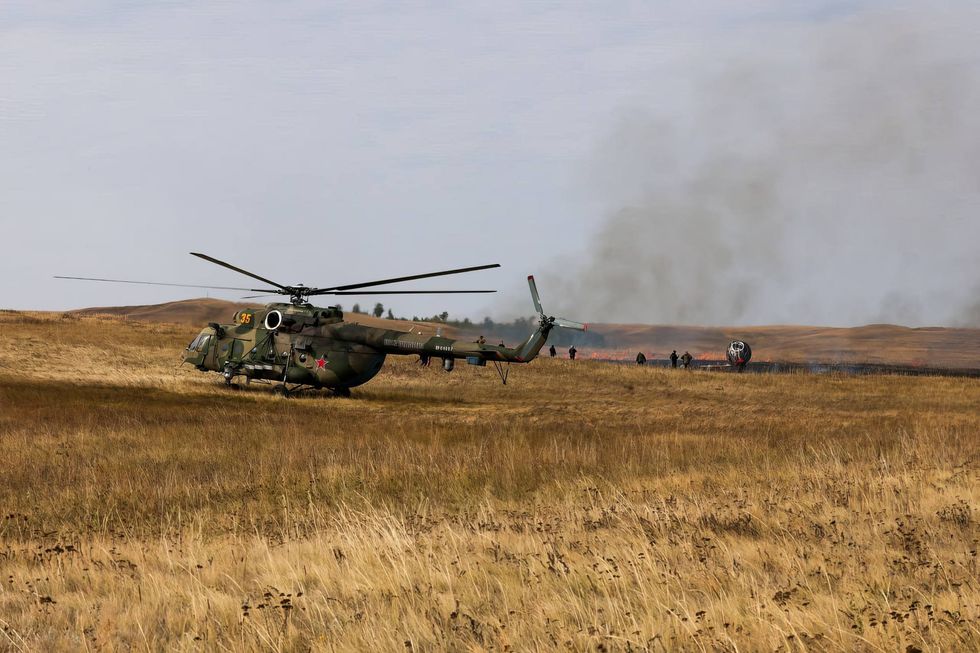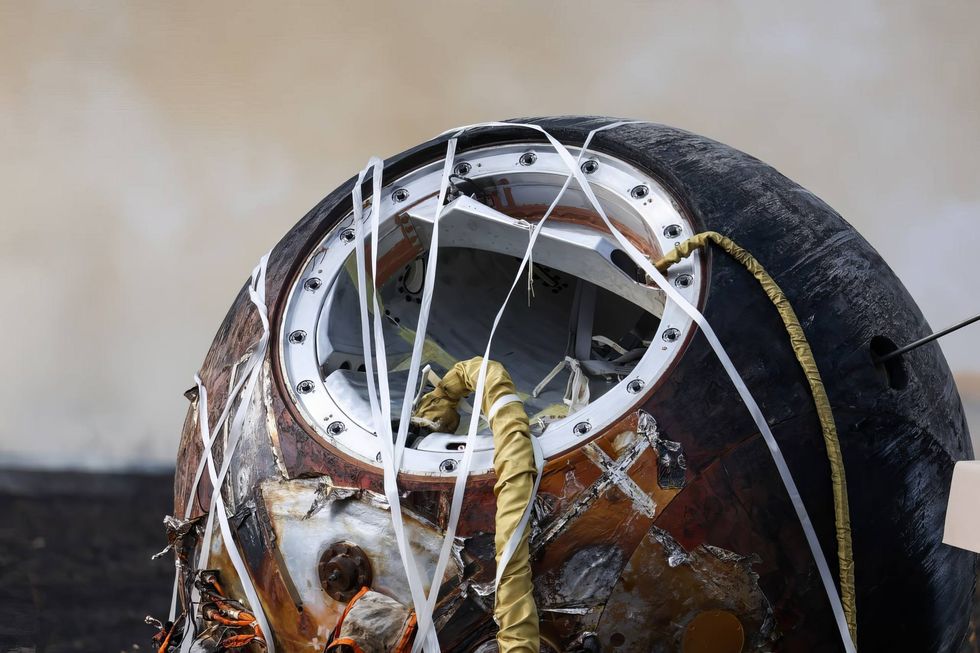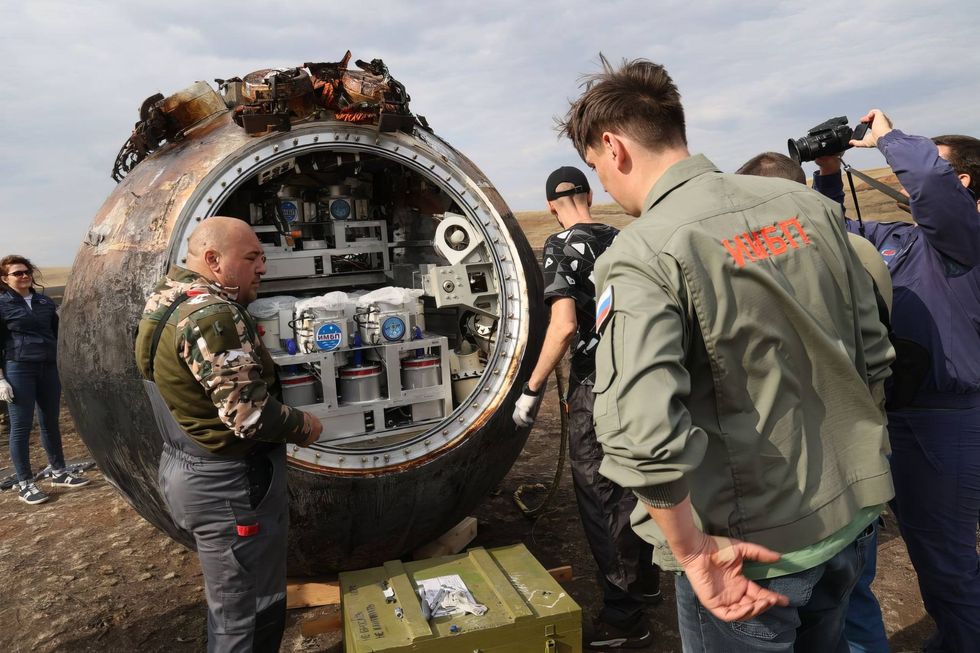



A Russian space capsule carrying more than 1,500 living creatures crash-landed to Earth - with dramatic images coming to light of its touchdown.
Deep in Russia's Orenburg steppes, the Bion-M No2 satellite made its final descent on September 19 following a month-long mission around the world.
The craft, part of a mission by Russian space agency Roscosmos, earned the moniker "Noah's Ark" due to its extraordinary biological cargo.
It transported 75 mice and over 1,500 flies alongside various plants and micro-organisms during its 30-day journey, exposing the specimens to intense cosmic radiation whilst in orbit.

Recovery teams quickly descended on the landing site, where a minor bushfire had broken out
|ROSCOSMOS
Recovery teams quickly descended on the landing site, where a minor bushfire had broken out - before promptly being extinguished.
Helicopters were seen rushing in to retrieve the living specimens for immediate examination.
Then, scientists established a medical tent on location to begin preliminary assessments.
Researchers conducted initial evaluations of the flies' motor functions and checked for potential nervous system abnormalities, according to Space.com.

Helicopters were seen rushing in to retrieve the living specimens for immediate examination
|ROSCOSMOS
These immediate observations are said to have been crucial in understanding the acute effects of the space journey.
The satellite launched from Kazakhstan's Baikonur cosmodrome on August 20 aboard a Soyuz rocket.
Its trajectory followed a pole-to-pole orbital path throughout the mission.
The diverse biological payload included not only the mice and flies but also various plant specimens and micro-organisms.

PICTURED: Close-up images of the 'Noah's Ark' satellite after landing
|ROSCOSMOS
Each category of organism was selected to provide different insights into the effects of space travel on living systems.
The specimens were subsequently transported to the Institute of Biomedical Problems of the Russian Academy of Sciences, arriving at around midnight on September 20.
The swift recovery operation meant that as few possible organisms on board endured "post-landing stress", preserving the integrity of the experimental data.
The Bion-M No. 2 mission forms part of an extensive scientific programme encompassing over 30 experiments across 10 research areas.

PICTURED: Roscosmos research teams examine the charred satellite after its crash-landing
|ROSCOSMOS
Its primary goal involves creating technologies to safeguard astronauts from harmful cosmic radiation and the physiological impacts of weightlessness.
The month-long duration allowed researchers to observe the effects of longer-term radiation exposure rather than short-term reactions.
This timeframe mirrors a potential future journey length for a manned mission, making the data particularly relevant for developing protective measures.
But once again, Russia looks to have lost the space race to the US, which just days ago announced plans for manned mission around the moon by early 2026.
